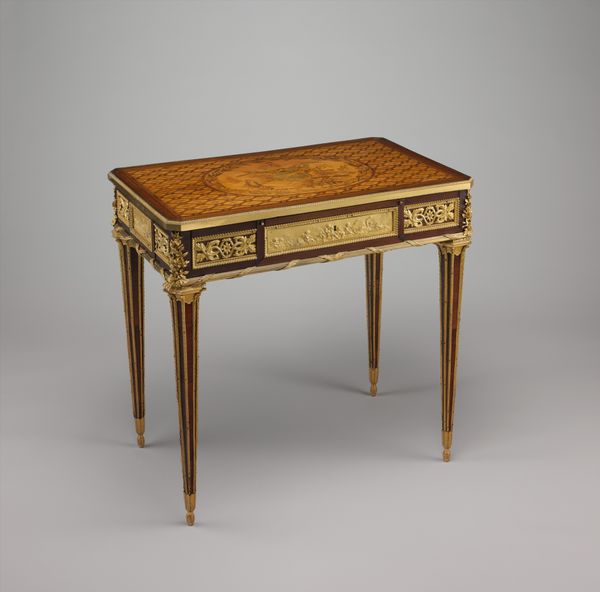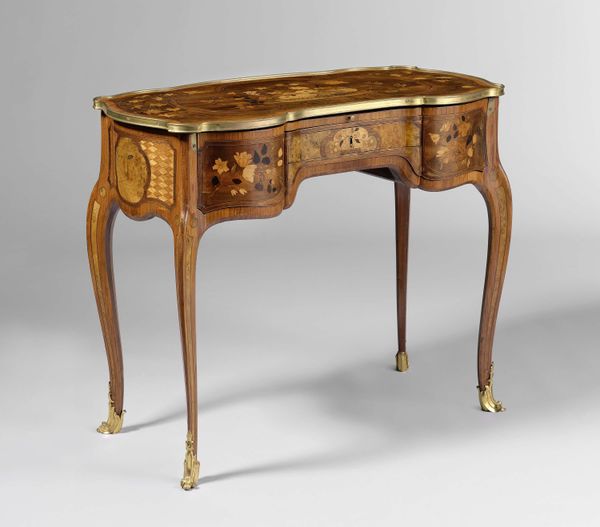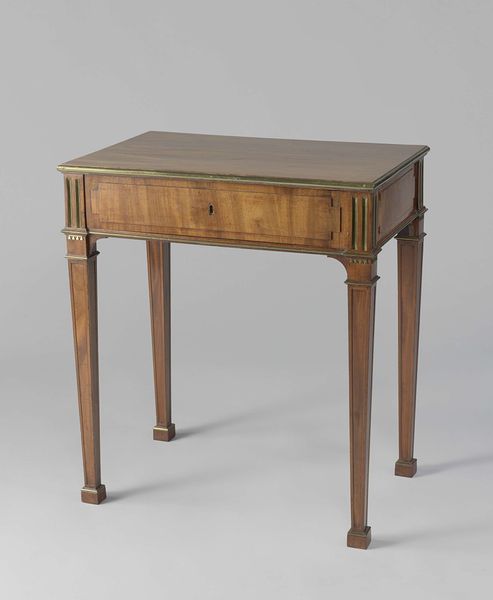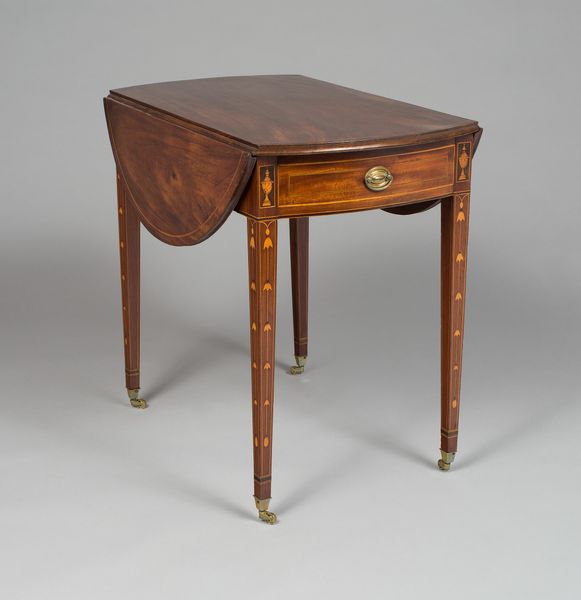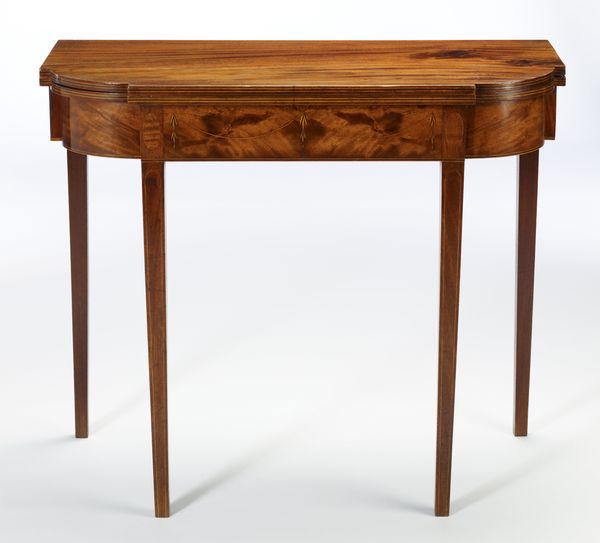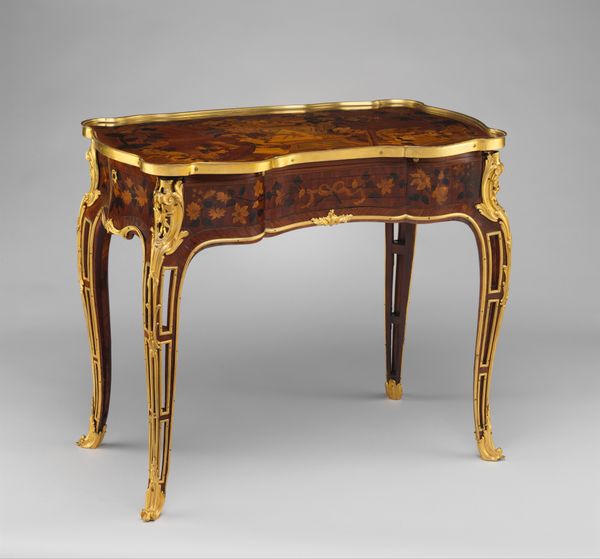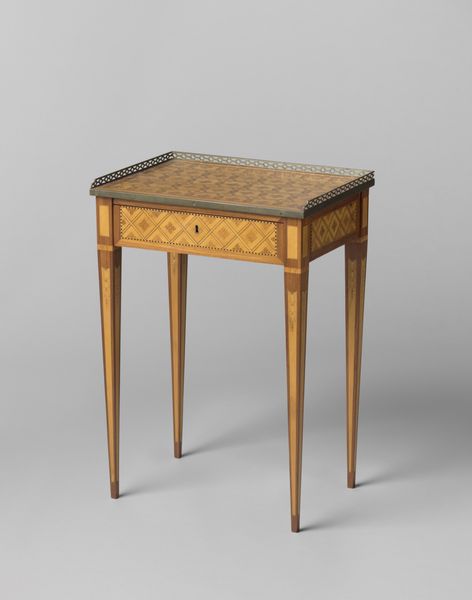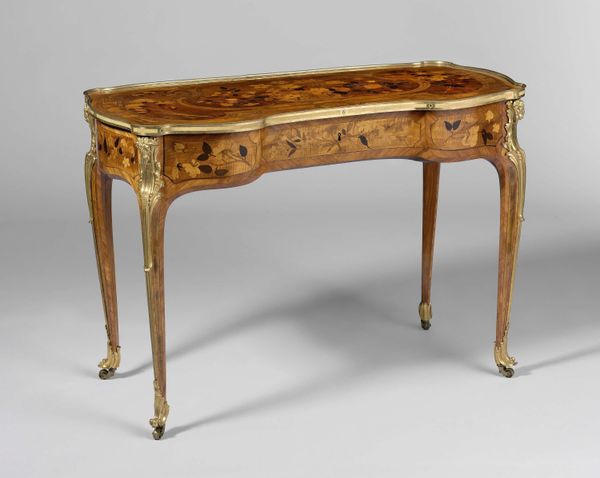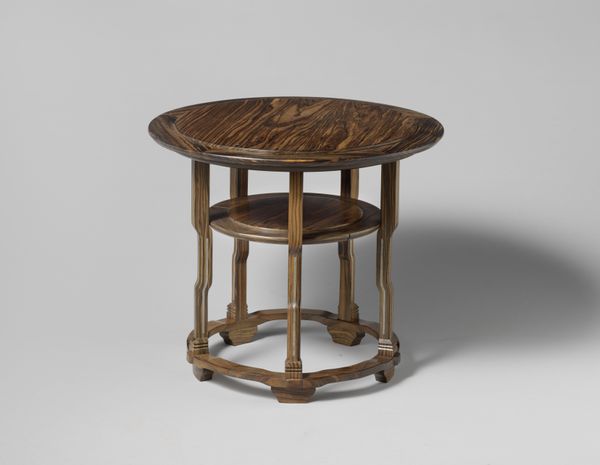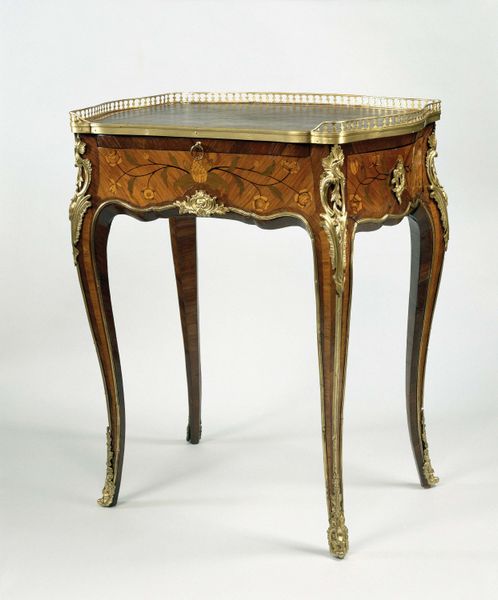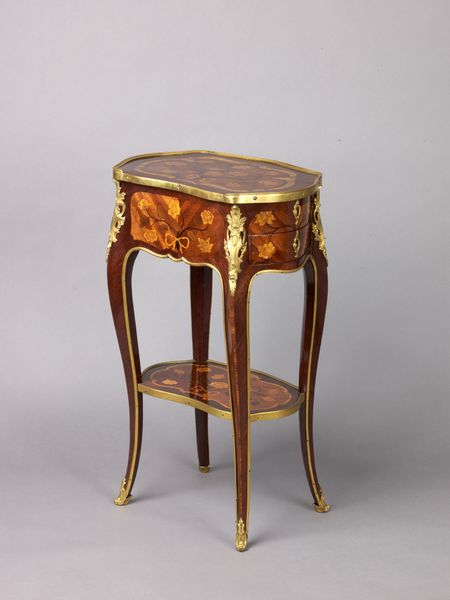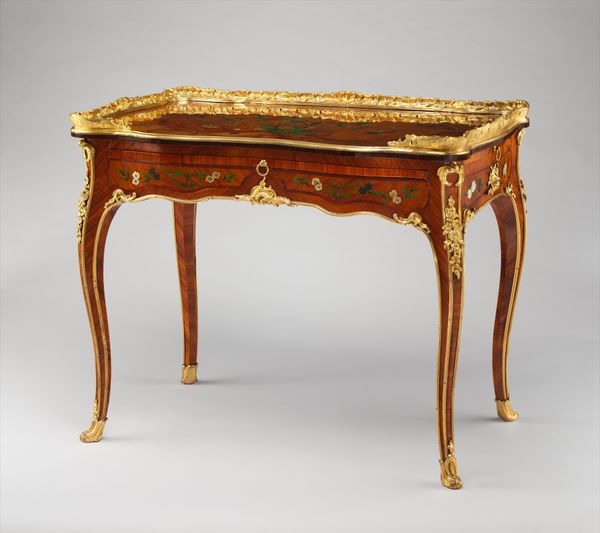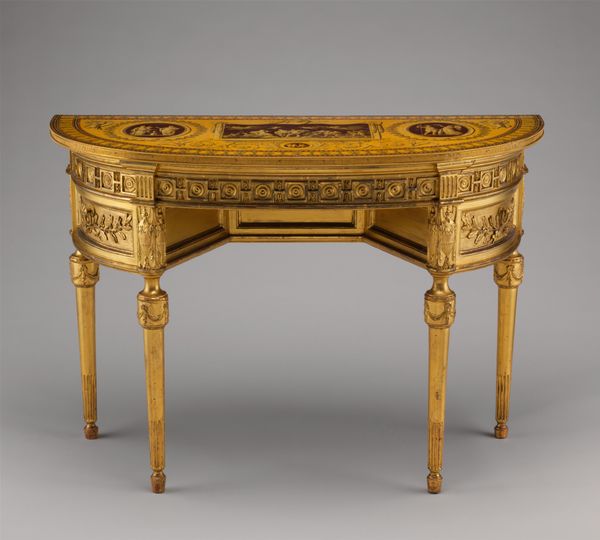
wood
#
neoclacissism
#
furniture
#
wood
#
decorative-art
Dimensions: height 73.5 cm, width 72.5 cm, depth 50.0 cm, width 47.7 cm, depth 36.0 cm
Copyright: Rijks Museum: Open Domain
Curator: The delicate wood surface of this writing table presents a study in restraint and grace. Constructed by David Roentgen around 1780 to 1785, it exemplifies the neoclassical taste for order and balance. Editor: Its immediate presence is so refined! The lines are almost austere. What strikes me most is how the simplicity of its shape contrasts with the ornamentation in the detailing of the top and the gold leafing. Curator: Ornament speaks to cultural values, doesn’t it? Roentgen was masterful at blending German craftsmanship with French design. The marquetry—that intricate surface decoration— isn't mere flourish. Look closer at the imagery on the table's top: classical figures, likely alluding to virtue and the pursuits of knowledge. Editor: You’re right, the surface is quite intriguing. The way those figures seem to float across the wood grain integrates surface and image rather beautifully. The structural aspects contribute significantly to its symbolic weight, then, by echoing, or perhaps upholding, certain values. Curator: And those tapered legs—a subtle nod to classical columns—lend a sense of lightness, counteracting the density of the wood. These choices reflect the period's fascination with antiquity, where art and utility converged in expressions of idealized society. Editor: The eye travels without impediment around the composition, guided by clean forms and those gilded vertical accents. Semiotically, even those slim cylindrical forms represent ideals. So much communicated with so little fuss. Curator: Yes, even in something as ostensibly functional as a table, Roentgen encoded the intellectual and social aspirations of his time. It’s a quiet monument to a cultural moment, holding its memory lightly yet resolutely. Editor: A perfectly composed testament to both form and meaning. Thanks to that clarity, the table continues to speak, across centuries.
Comments
rijksmuseum about 2 years ago
⋮
Roentgen was renowned for his marquetry, which is composed, like a jigsaw puzzle, of tiny pieces of different wood, without engraved details. He called this technique à la mosaïque. On this tabletop the Greek hero Aeneas is shown fleeing the burning city of Troy carrying his father Anchises on his back. This story is recounted by the Roman poet Virgil in the Aeneid, an epic poem about Aeneas’ heroic deeds.
Join the conversation
Join millions of artists and users on Artera today and experience the ultimate creative platform.

